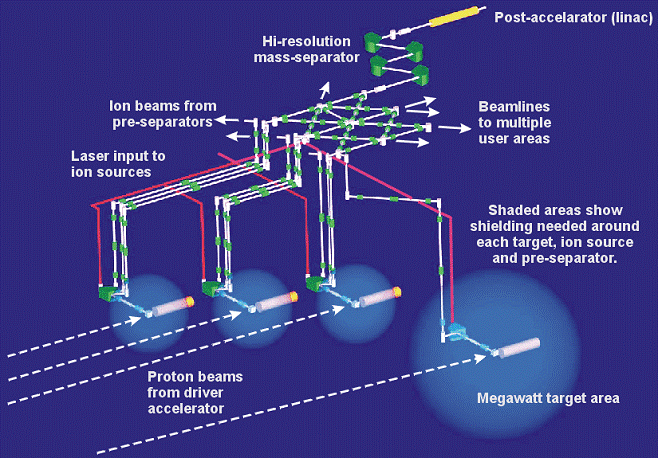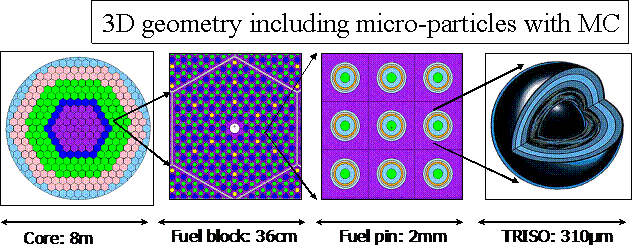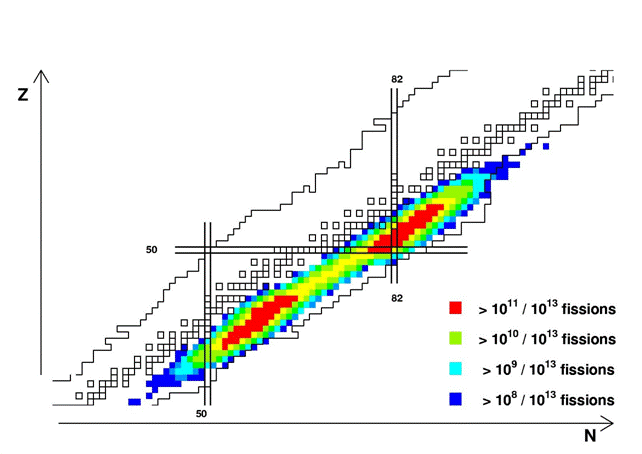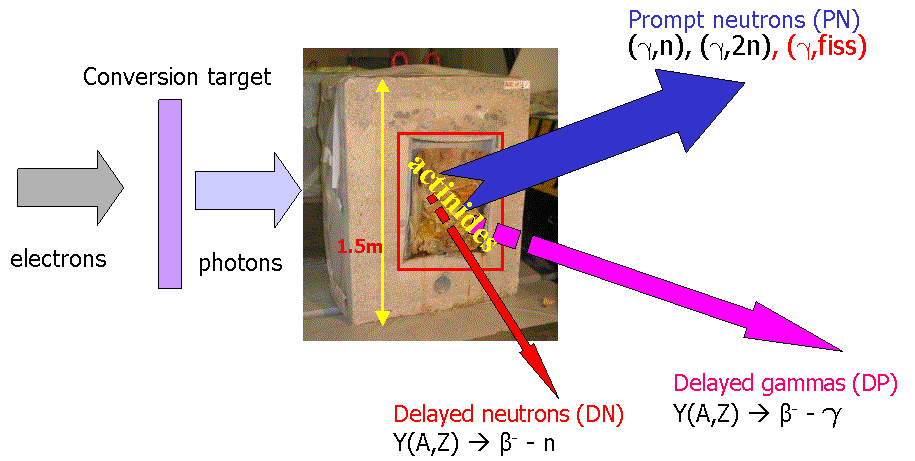Thèmes-programmes:
Thématique et contexte du projet In parallel with the experimental activities of the MNM group at DAPNIA/SPhN some fundamental and applied modelling takes place to simulate innovative nuclear systems for nuclear waste transmutation, intensive neutron sources based on spallation and photonuclear reactions, radioactive nuclear beam production scenarios, dismantling of nuclear installations, etc.
For this purpose complex computer code systems were implemented and progressively developed at SPhN. These modelling tools are based on a Monte Carlo technique allowing realistic geometry and material specifications in 3D. When available, the evaluated data libraries are used for multi-particle–nucleus interactions and transport calculations, otherwise recent nuclear models are applied to simulate different processes of interest including time-dependent evolution of nuclear fuel and/or irradiation/production targets.
Localisation DSM/DAPNIA/SPhN
Collaboration
CEA/DEN;
CEA/DIF;
CEA/DRT;
LANL, Los Alamos, USA;
Physics Institute, Vilnius, Lithuania;
TSI Research, San Diego, USA;
KAERI, Taejeon, South Korea;
GSI, Germany.
Approche scientifique
Moyens d'investigation Both theoretical and experimental investigations are in progress including data evaluation procedures.
Instruments Computer codes and programmes; theoretical models.
Spécificités Use of Monte Carlo methods for particle transport calculations (MCNPX);
Use of deterministic methods for material activation analysis (CINDER);
Comparison model predictions with existing experimental data;
Use of well known reaction codes (GNASH, HMS-ALICE, EMPIRE, ABLA, etc.) for data evaluations and theoretical predictions.
Contribution du Dapnia
Responsabilités scientifiques et techniques Coordination of "Safety and Radioprotection" working package within EURISOL Design Study (2005-2009) (Europe);
Coordination of "Gilibert" and "ECO-NET" projects financed by the Ministry of Foreign Affairs;
Coordination of working group "Neutrons for Science at SPIRAL-2" (GANIL, France);
Collaboration with DAPNIA/SENAC on dismantling of nuclear installations, characterization of nuclear waste, design of new nuclear facilities;
Liason officer for CEA/DSM with NEA Data Bank (OECD) in Paris, France;
Services DSM/DAPNIA/SENAC
DIF/DPTA/SPN
DRT/LIST/DETECS/SSTM
Etats et perspectives
Etat au 31 décembre 2005 A number of noticeable results were obtained in 2005:
* benchmark calculations on neutron, charged particle and residual nuclei production within EURISOL DS
* characterization of the SPIRAL2 facility for Neutrons for Science (material irradiations and nToF measurements)
* transmutation of nuclear waste using fusion-fission hybrid system
* proposal of using delayed gammas as a potential observable for non-destructive nuclear waste characterization (project INPHO2)
* waste characterization of ULYSSE reactor (INSTN) and LURE accelerator (Orsay) to be dismantled
Perspectives * continuation of the EURISOL DS project (leadership of task 5 and participation in tasks 4 and 11)
* continuation of nuclear modeling related to the SPIRAL2 project
* collaboration with DAPNIA/SENAC on ongoing activities on nuclear waste characterization
* 1 PhD thesis in progress on "Nuclear waste characterization of the industrial nuclear reactor to be dismantled"
* potential participation in the NUMADE project on non-destructive nuclear material detection on the boarders
Bilan scientifique et technique The above work can serve as a direct evidence of linking the knowledge of fundamental nuclear physics, being either experimental or theoretical, to a variety of exciting applications.
* a number of publications in international scientific journals;
* a number of presentations in international conferences-workshops;
* industrial patent deposited and accepted for publication on "Coupling of the particle accelerator with a sub-critical core"
* organization of workshop "Neutrons for Science" at GANIL (Caen)
* organization of Franco-Lithuanian Information Exchange meeting at Physics Institute (Vilnius, Lithuania)
* participation in the GEDEPEON initiative on nuclear waste transmutation
Faits marquants 2002- DAPNIA "Un prototype de réacteur sous-critique piloté par un accélérateur d'électrons"
2003- DAPNIA "Modélisation de réacteurs de nouvelle génération pour l'incinération du plutonium"
2004 - PhD thesis defended by Rita Plukiene on modelling of innovative nuclear systems for nuclear waste incineration and production of nuclear energy
2005 - PhD thesis defended by Pavel Bokov on safety issues of critical and sub-critical nuclear systems;
Contact D. RIDIKAS







